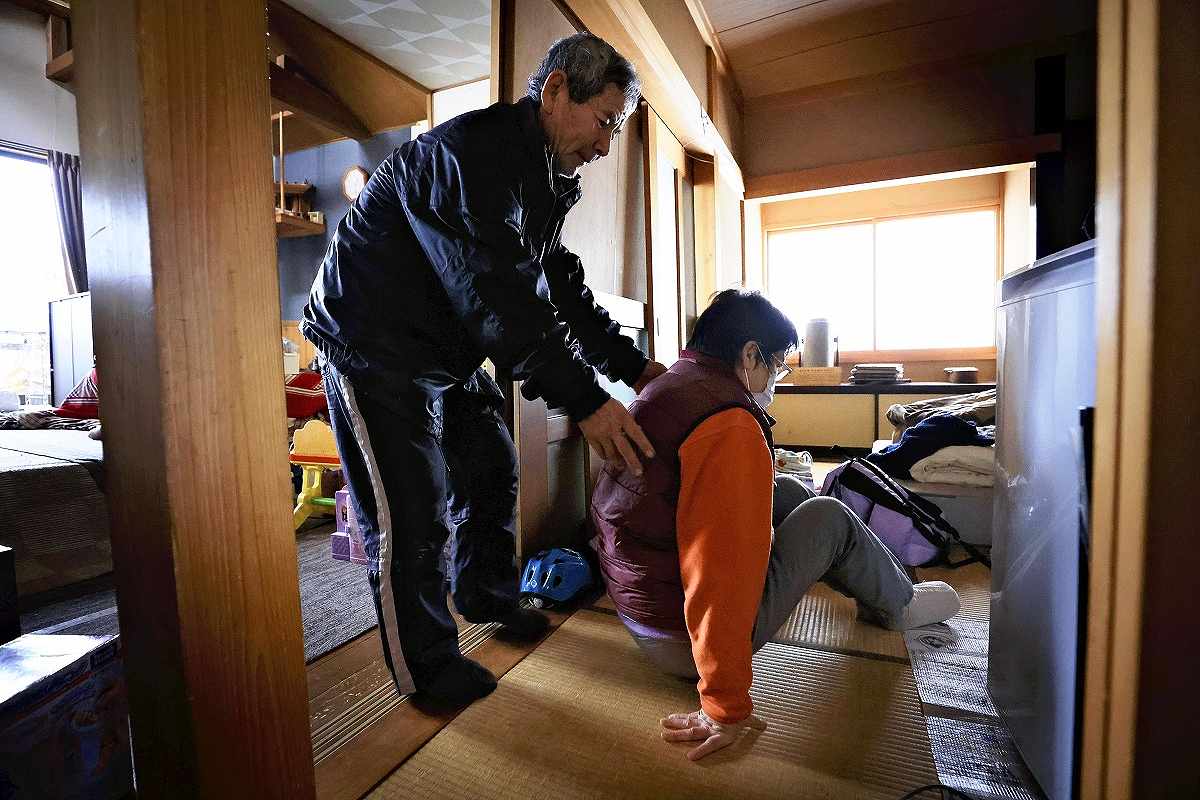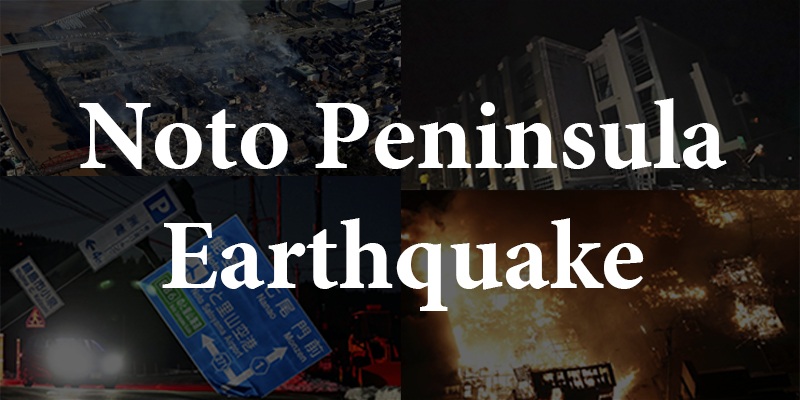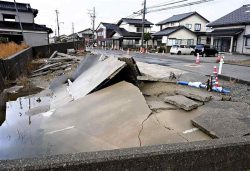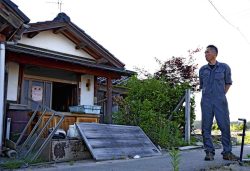Few Shelters for Elderly, Disabled Manage to Open after Japan’s Noto Earthquake

Yoshimitsu Ikeyachi, left, helps his wife, Kiyomi, who is unable to walk due to a tumor, at their home in Suzu, Ishikawa Prefecture, which was damaged a massive quake on New Year’s Day.
7:00 JST, January 20, 2024
Authorities in Ishikawa Prefecture are finding it difficult to open a sufficient number of welfare shelters after a deadly earthquake struck the region on New Year’s Day. Welfare shelters are designed for those who need help with daily living, such as the elderly and the disabled.
In seven cities and towns hit hard by the disaster, authorities have managed to set up only about 20% of planned welfare shelters, hindered by severe damage to facilities and a lack of running water and manpower.
With some survivors giving up on shelters and staying at their damaged homes, it is feared that disaster-related deaths could rise due to stress and other factors. Experts have made urgent calls for boosting aid to those in need.
More than two weeks after the fatal disaster, Yoshimitsu Ikeyachi, 73, and his wife, Kiyomi, 73, still have no choice but to remain in their damaged home in the Nonoe area of Suzu.
Kiyomi is unable to stand because of a tumor in her bone marrow. Tada Elementary School nearby is being used as a shelter for evacuees, but the couple were unable to move into the center because it only offers ordinary toilets.
The couple’s wooden house has tilted sharply due to ground subsidence. The floor’s slant makes it impossible for Kiyomi to move around by wheelchair or with a cane, and instead she has to rely on her arms.
Although the power has been restored, the inside of the house is frigid because of the cold air that enters through the cracks of the doors and windows.
“I wonder how long we’ll be able to stand living in such conditions. I could take my wife to a shelter if they just had a toilet with handrails,” Yoshimitsu sighed.
To set up welfare evacuation shelters, local governments must anticipate needs during a disaster and conclude agreements beforehand with private-sector welfare facilities for the elderly and other institutions.
Unlike ordinary shelters, welfare shelters are designed to be accessible to the elderly and disabled and manned by staff who assist them with meals and using the toilet.
According to Yomiuri Shimbun surveys, the seven cities and towns in the prefecture plan to open up to 86 welfare shelters. But only 20 had been set up as of Wednesday. The city of Suzu plans to open seven such facilities but has yet to open any.
Some of the facilities are also shorthanded due to their staffs having been affected by the disaster, while other locations find it difficult to function as welfare shelters because ordinary evacuees have flooded in.
The town of Noto opened three of five of its designated welfare shelters but had to stop accepting evacuees due to outbreaks of COVID-19 and other diseases.
In Wajima, seven of 26 designated welfare shelters have opened. Busshien, a social welfare service corporation, opened its cafe to evacuees as a welfare shelter. Twenty-five evacuees, including those with hearing difficulties, are taking refuge there.
In a series of major earthquakes that struck Kumamoto Prefecture in 2016, the number of disaster-related deaths reached 218, more than four times the number of those who were killed directly by the quakes. Nearly 80% of those who died from disaster-related reasons were age 70 or older.
Welfare shelters are meant to play a frontline role in protecting those who need assistance during a disaster.
“In rural areas like the Noto Peninsula, the population has aged more than in urban areas, and there is a greater need for welfare shelters,” said Prof. Tsuzuki Koichi of Tohoku Fukushi University, an expert on regional welfare. “In the wake of the Great East Japan Earthquake, civic centers and special needs schools were used as temporary welfare shelters. Those who need welfare aid should be offered low-stress places as soon as possible.”
"Society" POPULAR ARTICLE
-

M4.9 Earthquake Hits Tokyo, Neighboring Prefectures
-

M7.5 Earthquake Hits Northern Japan; Tsunami Waves Observed in Hokkaido, Aomori and Iwate Prefectures
-

Tsukiji Market Urges Tourists to Avoid Visiting in Year-End
-

Israeli Tourists Refused Accommodation at Hotel in Japan’s Nagano Pref., Prompting Protest by Israeli Embassy and Probe by Prefecture
-

M5.7 Earthquake Hits Japan’s Kumamoto Pref., Measuring Upper 5 Intensity, No Tsunami Expected
JN ACCESS RANKING
-

Keidanren Chairman Yoshinobu Tsutsui Visits Kashiwazaki-Kariwa Nuclear Power Plant; Inspects New Emergency Safety System
-

Imports of Rare Earths from China Facing Delays, May Be Caused by Deterioration of Japan-China Relations
-

University of Tokyo Professor Discusses Japanese Economic Security in Interview Ahead of Forum
-

Japan Pulls out of Vietnam Nuclear Project, Complicating Hanoi’s Power Plans
-

Govt Aims to Expand NISA Program Lineup, Abolish Age Restriction
























